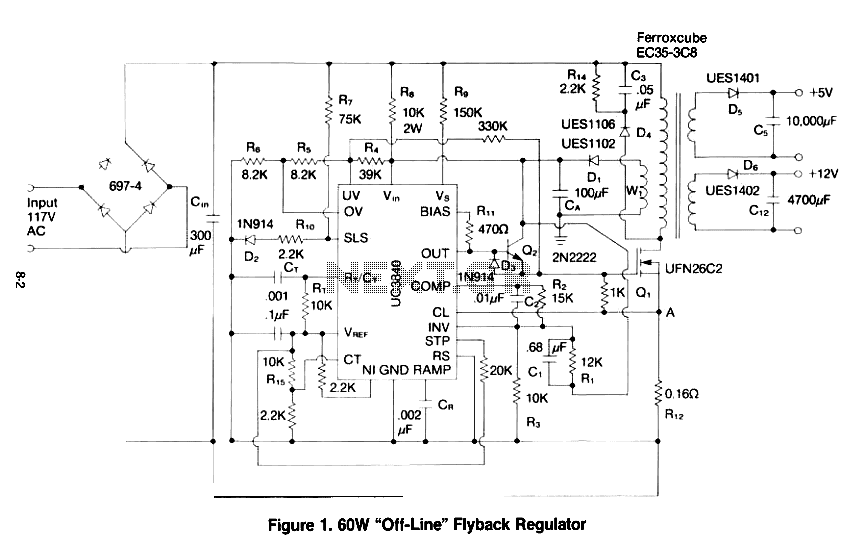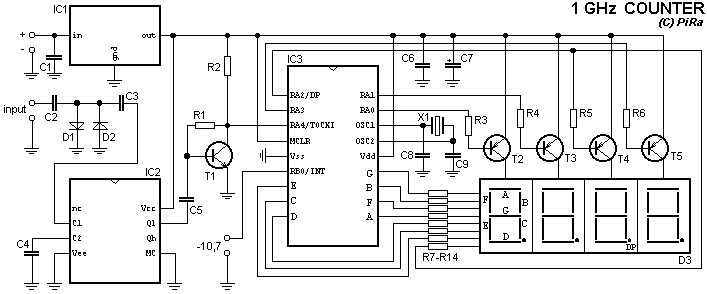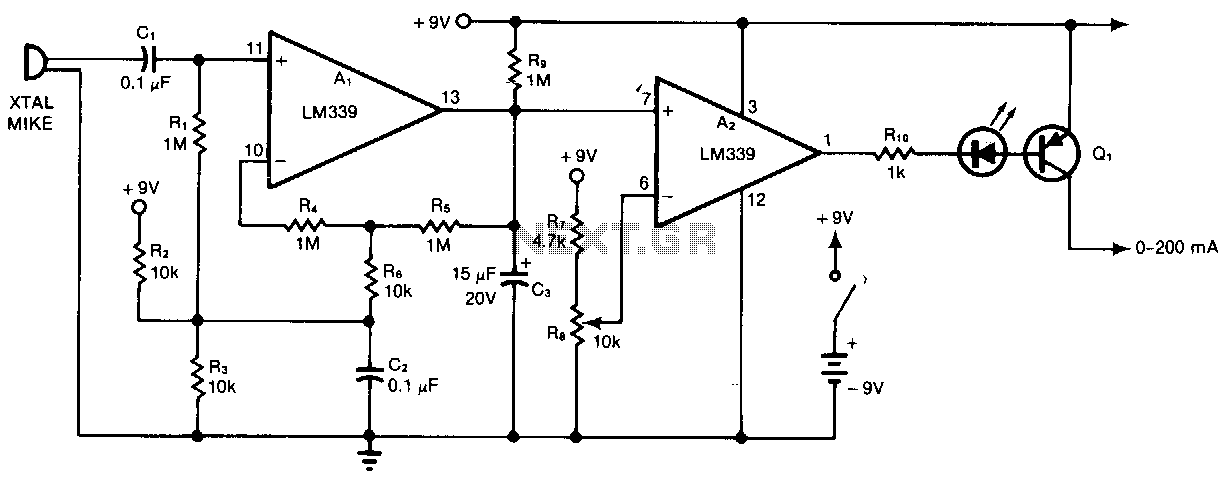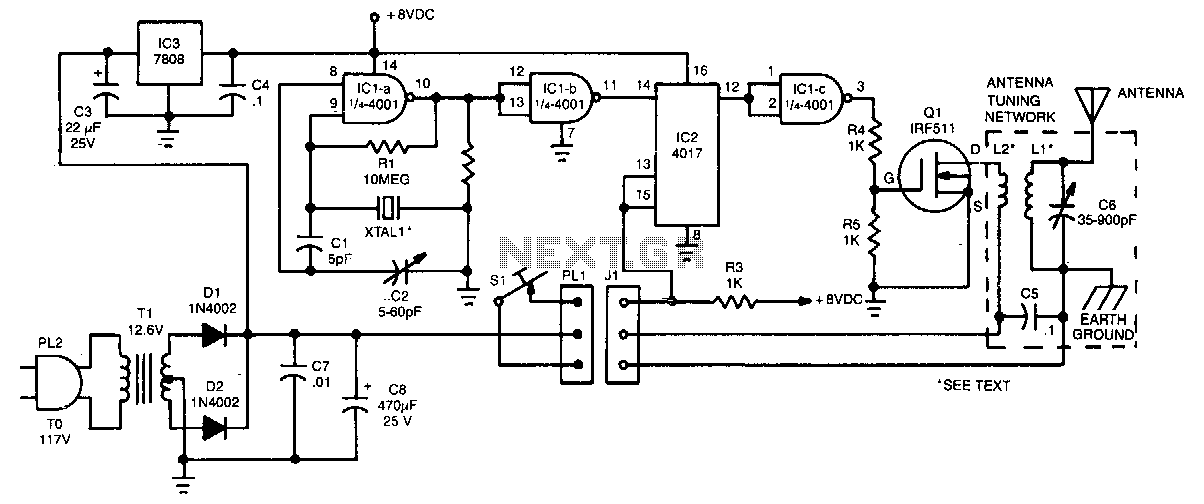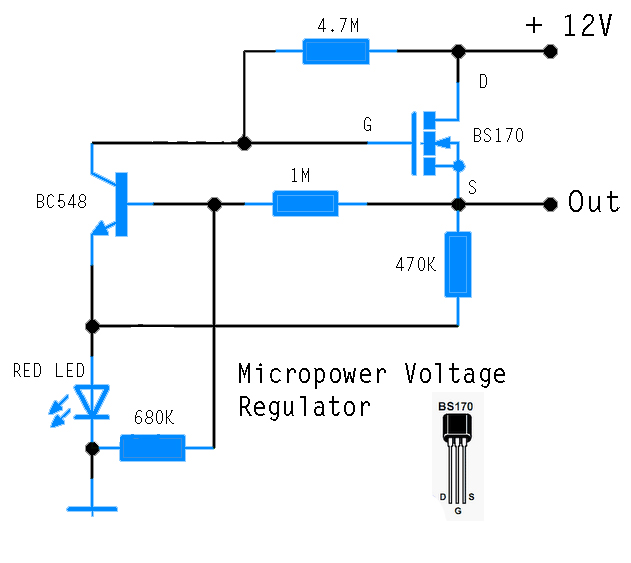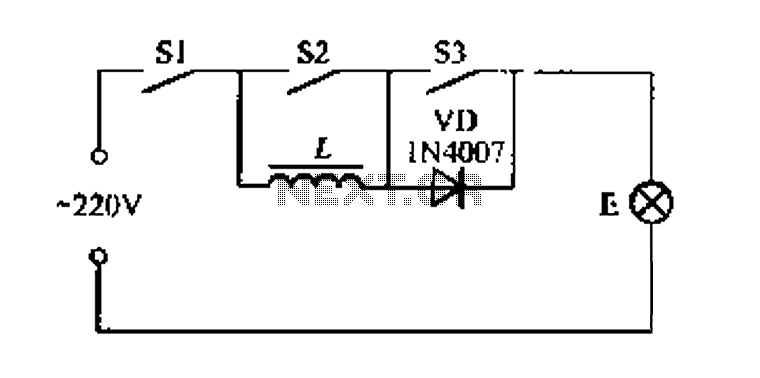
Variable Frequency Switch Mode Regulator
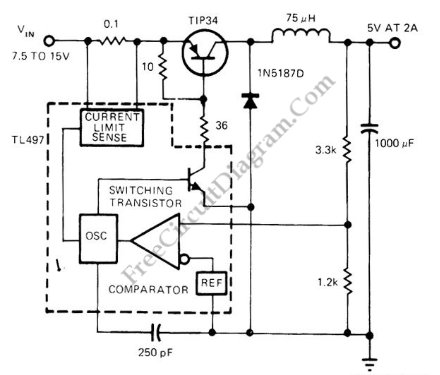
Switching voltage regulator utilizing the TL497 integrated circuit, achieving up to 75% efficiency. The output voltage is 5V, while the input voltage ranges from 7.5V to 15V.
The TL497 is a versatile integrated circuit designed for use in switching voltage regulator applications. It operates by converting a higher input voltage to a lower output voltage, specifically providing a stable 5V output. The input voltage range of 7.5V to 15V allows for flexibility in various power supply scenarios, making it suitable for battery-operated devices or power supply systems requiring a regulated output.
The efficiency of up to 75% indicates that a significant portion of the input power is converted into usable output power, minimizing energy loss in the form of heat. This characteristic is particularly important in applications where thermal management is critical, as it reduces the need for extensive heat dissipation solutions.
In terms of circuit configuration, the TL497 typically operates in a feedback loop, where it continuously monitors the output voltage and adjusts the duty cycle of the switching element (usually a transistor) to maintain the desired output voltage. This feedback mechanism is crucial for achieving regulation and stability in the output voltage, even with variations in input voltage or load conditions.
The circuit design may include additional components such as inductors, capacitors, and diodes to form a complete switching power supply. The inductor stores energy when the switch is closed and releases it to the output when the switch is open, while capacitors help smooth the output voltage and filter out noise. A Schottky diode is often used in the output stage to provide a fast recovery time and minimize voltage drop.
Overall, the TL497-based switching voltage regulator is an efficient solution for applications requiring a reliable 5V output from a variable input voltage, providing a compact and effective means of power regulation.Switch mode/switching voltage regulator with TL497 integrated circuit, up to 75% efficiency, output: 5V, input: 7.5-15V. 🔗 External reference
The TL497 is a versatile integrated circuit designed for use in switching voltage regulator applications. It operates by converting a higher input voltage to a lower output voltage, specifically providing a stable 5V output. The input voltage range of 7.5V to 15V allows for flexibility in various power supply scenarios, making it suitable for battery-operated devices or power supply systems requiring a regulated output.
The efficiency of up to 75% indicates that a significant portion of the input power is converted into usable output power, minimizing energy loss in the form of heat. This characteristic is particularly important in applications where thermal management is critical, as it reduces the need for extensive heat dissipation solutions.
In terms of circuit configuration, the TL497 typically operates in a feedback loop, where it continuously monitors the output voltage and adjusts the duty cycle of the switching element (usually a transistor) to maintain the desired output voltage. This feedback mechanism is crucial for achieving regulation and stability in the output voltage, even with variations in input voltage or load conditions.
The circuit design may include additional components such as inductors, capacitors, and diodes to form a complete switching power supply. The inductor stores energy when the switch is closed and releases it to the output when the switch is open, while capacitors help smooth the output voltage and filter out noise. A Schottky diode is often used in the output stage to provide a fast recovery time and minimize voltage drop.
Overall, the TL497-based switching voltage regulator is an efficient solution for applications requiring a reliable 5V output from a variable input voltage, providing a compact and effective means of power regulation.Switch mode/switching voltage regulator with TL497 integrated circuit, up to 75% efficiency, output: 5V, input: 7.5-15V. 🔗 External reference
